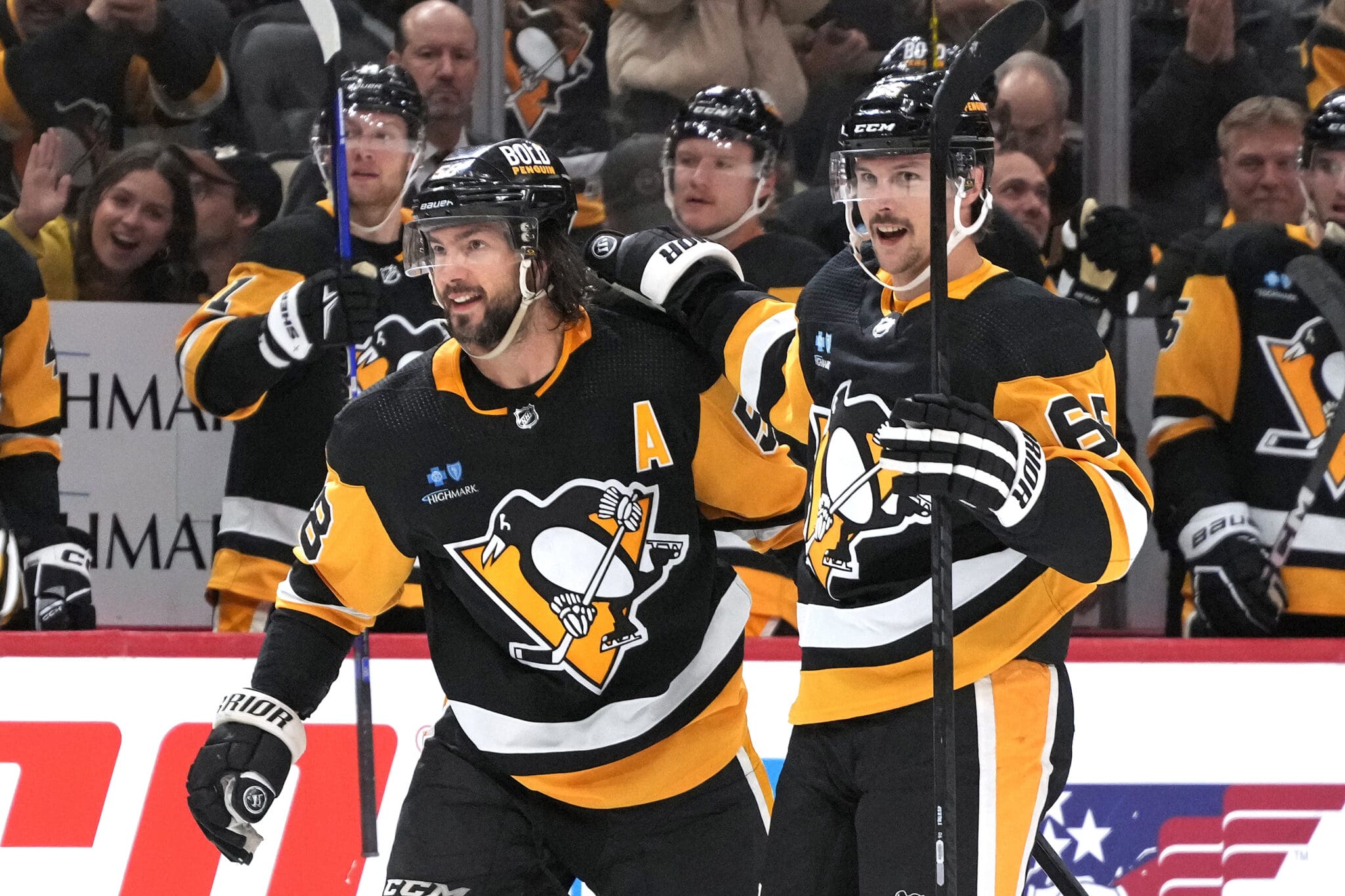Penguins
3 Penguins Thoughts: Fixes for Power Play, One Key To Trade Deadline

A successful power play is not necessarily an essential component of winning, though thriving without goals on the man advantage is rare. After a brief respite, the Pittsburgh Penguins’ season-long power play malaise has returned to the depths of ineffectiveness.
The Philadelphia Flyers are surging after acquiring Jamie Drysdale for Cutter Gauthier. The Flyers occupy second place in the Metro Division but have the worst power play in the NHL. At 12.2%, Philadelphia ranks 32nd. The Penguins aren’t much better at 13.7%.
The other teams in the cellar are non-playoff teams such as Calgary, Buffalo, Ottawa, Chicago, and St. Louis. Interestingly, the Washington Capitals’ special teams unit is also languishing. A few more power-play goals in the nation’s capital would also change the standings in the Metro.
One can only assume that after 42 games, associate coach Todd Reirden, who is the power play coordinator, has tried everything.
Contrary to public frustrations, coaches care deeply about the results and aren’t just mindlessly pounding the square peg hoping to fit into the round hole.
However, there is an overwhelming feeling the pegs the coaches have been pounding just do not fit, and no wrinkles or ingenious inventions can overcome the irrational but painfully obvious.
The consistent crop of five players just doesn’t work.
It might be the perfect storm of personnel, bad luck, and bad schemes. Or it might be personnel. It might be the scheme. The underlying numbers still show the Penguins to have the fifth-highest expected goal total at 5v4. The overwhelming conclusion from the eyes disputes that possibility.
The view here is the problem rests at the top of the power play. Evgeni Malkin and Erik Karlsson aren’t getting it done. Chemistry, incongruence, age, mindset. It no longer matters why; it only matters that it doesn’t work.
There is one controlled A/B test to run. That’s putting Kris Letang back on the point. However, that brushes past the power play struggles from last season, when Letang ran the top unit.
Replacing Malkin on PP1 would prove to be far more challenging. There isn’t an easy replacement. Rickard Rakell has played the point on PP2, but not with great success. Rakell’s defensive game might not be a good match playing beside Karlsson, either.
Here’s a crazy idea that coaches have tinkered with, likely out of exasperation, in the past. Put another defenseman at the top of the unit.
P.O Joseph? Joseph wouldn’t necessarily add to the unit’s offensive ability, but perhaps he could allow Karlsson to do more ad-libbing without as much worry about shorthanded chances. Specifically, Joseph has far more offensive instincts and abilities than he regularly shows.
Maybe that could unlock some of his game?
Some readers have suggested elevating Jeff Carter to the low position on PP1. I can’t argue the reasoning, but the net-front position means little if the puck never gets there. The Penguins’ biggest problems are setup and too much perimeter play.
As much as I despise the reckoning “it can’t be worse,” indeed, in this situation, that is correct.
As for any hurt feelings, the same corollary applies to the power play as it does the new style of play. Check your ego at the door.
2. Learn to Love Simple
The Penguins stacked wins when they played gritty. Remember coach Mike Sullivan responding to PHN a few weeks ago, a little tongue-in-cheek, but also seriously– “I don’t know the definition of gritty or ugly. I think it’s beautiful.”
When the Penguins strip away their desire to create more, to be more, and embrace the simple, gritty hockey, they’re a pretty good team.
Actually, they might be a very good team, at least in comparison to the rest of the Eastern Conference.
Monday, Sullivan candidly praised his team with a bit of a warning, too.
“For me, when our intentions are in the right place and (we have) a willingness to play the game a certain way, we can be hard to play against,” Sullivan said.
But when they don’t have those intentions, and they want to be “stars” and outscore opponents, they’re in trouble.
Can the Penguins check their egos and a career of playmaking at the door and find consistency in the ugliness? If they want to win, they will.
3. Puustinen & NHL Trade Deadline
Valterri Puustinen had his ice time taken away over the last week. He was loafing a bit in the defensive zone and not hustling in the offensive zone.
That’s not good enough for anyone, but especially for a young player who is forming his game and habits at the top level.
Puustinen responded on Monday. He had more zip and some determination.
Too often, fans have the wrong approach. Young players need to be molded for the NHL game. Teams and players that “play through their mistakes” without guidance, coaching, and veteran leadership often don’t reach their potential. The Ottawa Senators are going through that problem this season, and they’re looking for veteran leadership.
The Buffalo Sabres and Columbus Blue Jackets probably fall in the same category. The Chicago Blackhawks are worried about that, too.
After 20 years around this game, the thing I know is that there are dozens of things we don’t know about the game. Whenever I talk to guys at the top levels, the little things they see are extraordinary, and only those who have been immersed in that level can see them.
The biggest lesson the young players must learn is how to bring their best game without the adrenaline. Puustinen holds one of the keys for the Pittsburgh Penguins’ trade deadline plans. If he recedes, they badly need a middle-six winger. If he claims the spot, president of hockey operations/GM Kyle Dubas can focus on upgrading other areas.












